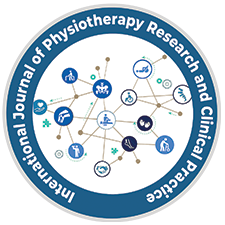


International Journal of Physiotherapy Research and Clinical Practice
DOI: 10.54839/ijprcp.v2i1.vishnu
Year: 2023, Volume: 2, Issue: 1, Pages: 7-11
Original Article
V B Vishnu1,∗, M P T Jincy Samuel1
1Krupanidhi College of Physiotherapy, Bangalore, Karnataka, India
Background and Objective: Subacromial Impingement Syndrome (SIS) is a common cause of shoulder pain and is often linked to scapular dysfunction. This study aimed to compare the efficacy of conventional shoulder exercises with laser therapy, scapular taping with laser therapy, and scapular stabilization exercises with laser therapy in treating SIS. Methods: A randomized controlled trial was conducted in outpatient clinics in Bangalore over six months. Forty-five subjects (aged 25-40 years) with Stage II SIS were randomly assigned to three groups: Group A (conventional exercises + laser therapy), Group B (scapular taping + laser therapy), and Group C (scapular stabilization exercises + laser therapy). Outcome measures included the Shoulder Pain and Disability Index (SPADI) and McGill Pain Questionnaire. Pre and post-intervention assessments were performed using the appropriate statistical tests. Findings: All groups showed significant improvements in the SPADI scores and pain levels (p < 0.001). Group C, who received scapular stabilization exercises, demonstrated the greatest reduction in pain and disability, with a post-test SPADI score of 23.00 ± 4.99 (p < 0.001). Group B (scapular taping) and Group A (conventional exercises) also showed significant improvements, but to a lesser degree. Novelty: This study compared scapular taping and stabilization exercises combined with laser therapy for SIS, offering valuable insights into their relative efficacy. Conclusion: Scapular stabilization exercises with laser therapy were more effective than scapular taping and conventional exercises in reducing pain and improving shoulder function in SIS patients. Individualized treatment approaches are recommended for optimal outcomes.
Keywords: Subacromial Impingement Syndrome, Scapular Taping, Scapular Stabilization, Laser Therapy
@ 2023 Published by Krupanidhi College of Physiotherapy. This is an open-access article under the CC BY license (https://creativecommons.org/licenses/by/4.0/)
Subscribe now for latest articles and news.